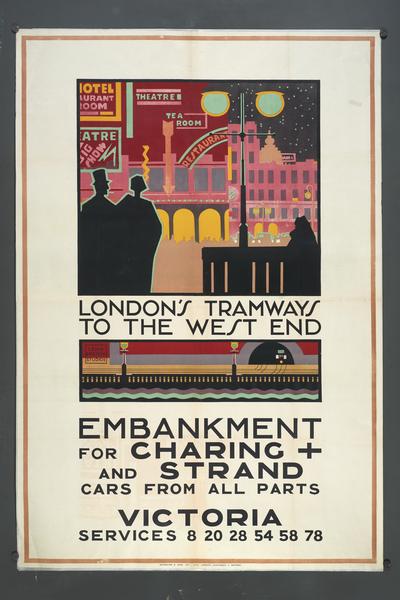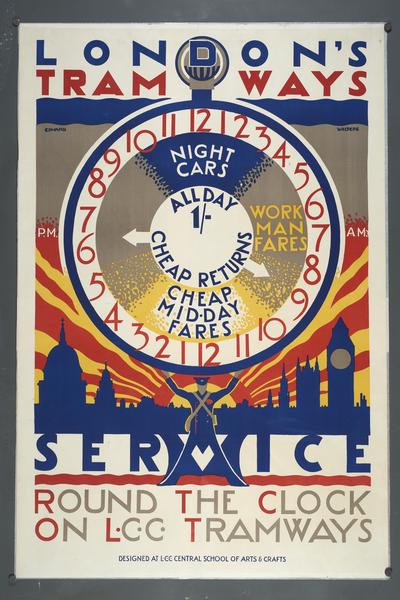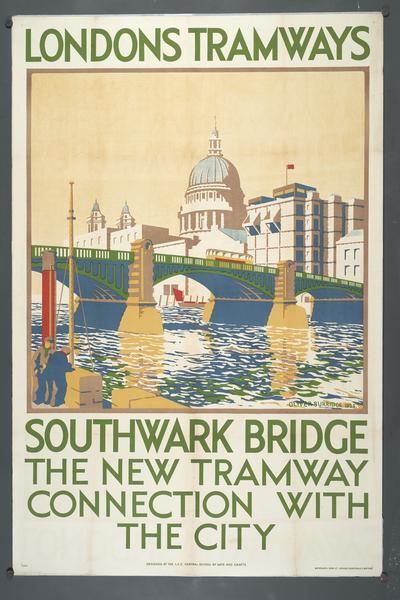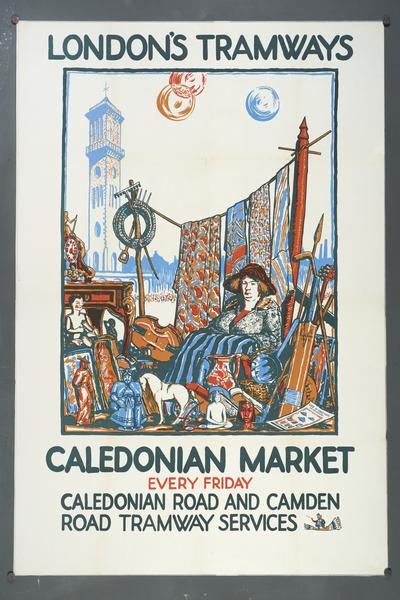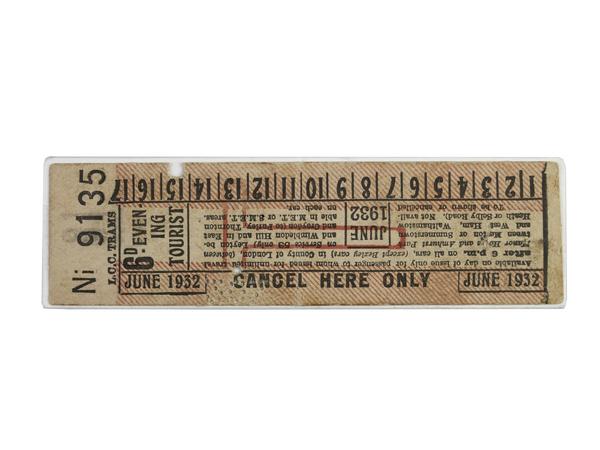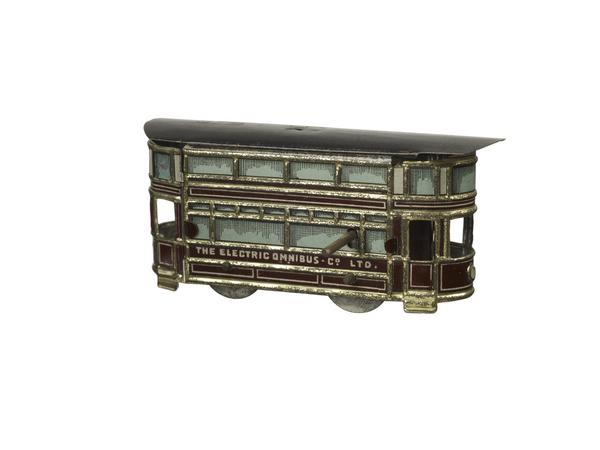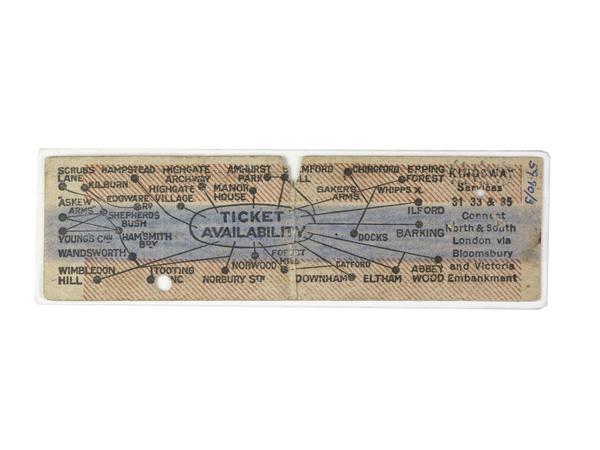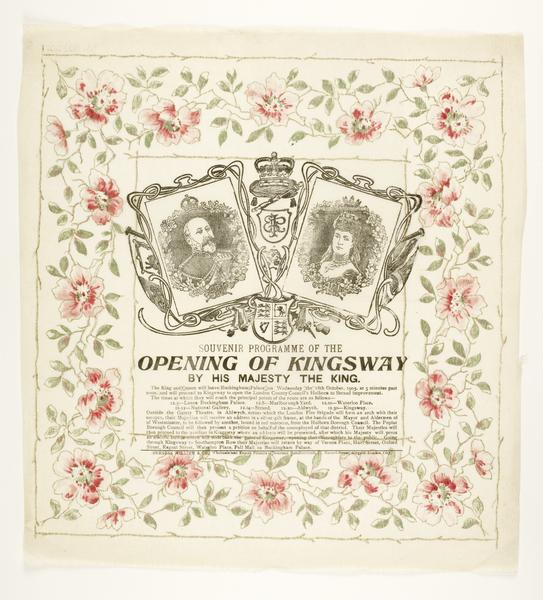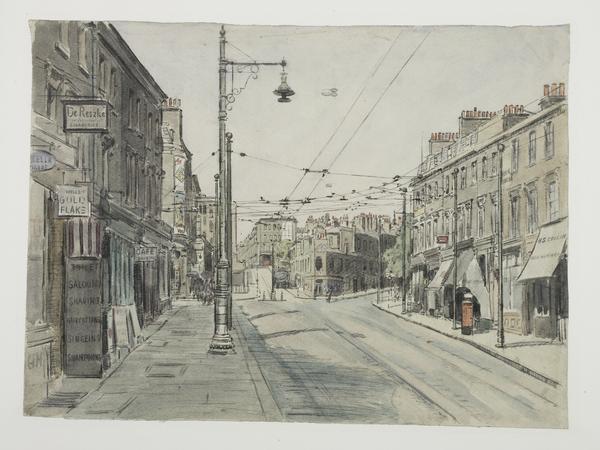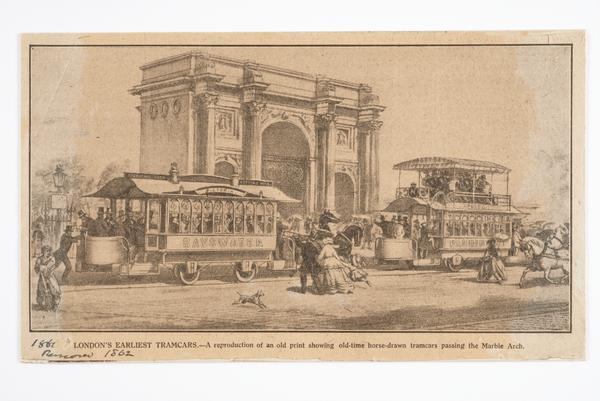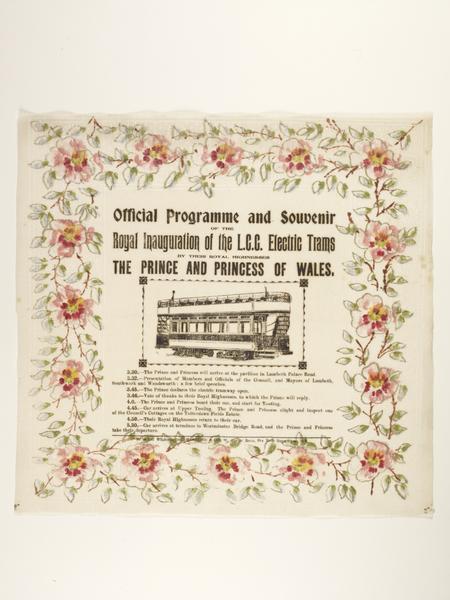When London moved by tram
London is famous for having the oldest underground railway network in the world. But the Underground was once second choice to London’s extensive, cheap and popular tram network, which ran across the city from the 1870s until 1952.
Across London
1861 – today

London’s first trams
This newspaper cutting shows horse-drawn tramcars passing the Marble Arch in Westminster. The first horse-drawn trams were introduced on three trial lines in 1861, including one on nearby Bayswater Road. The trams were similar to the omnibuses of the time, but had iron wheels which ran inside iron tracks.

More horsepower
It wasn’t until the 1870s that the tram lines began to spread. The first successful lines were in the suburbs of south London and east of the City. Fears that the trams would make traffic worse kept them out of the centre. The line that ran up Pentonville Road, shown in this painting, opened in the 1880s. Three horses were needed to pull the tram up the steep gradient.

London’s tram takeover
By 1895, Londoners were taking roughly 280 million tram journeys a year and were the cheapest form of transport. Trams ran every few minutes, could carry 50 passengers, were more comfortable than buses and operated early morning services, making them ideal for working class commuters.

An electrifying change
From 1901, horse-drawn trams were gradually replaced by electric trams. Some used overhead wires, while the London County Council’s network used a live rail underneath the road.

The Kingsway tram tunnel
This napkin was made to mark the royal opening of the Kingsway in Holborn in 1905. Underneath this major new road, a tram tunnel was built to connect Southampton Row and the Thames Embankment. It was a big step forward, linking the tram networks of north and south London for the first time. The tunnel closed in 1952, but can still be visited as part of an organised tour.

Tickets please
By the 1920s, London had the largest tram network in the world. Trams served London’s suburbs, allowing people living there to access the West End and its restaurants, cinemas and theatres. ‘Going up West’ became a popular Saturday outing for Londoners of all classes.

When did trams stop running in London?
As buses and the Tube network improved, trams fell out of favour. Trams were seen as noisy, dangerous and expensive to maintain. By 1940, half of the trams in London had been taken off the road. The last tram journey of this era ran in 1952.

Are there trams in London today?
Trams have made a modest modern comeback. In 2000, a new network called Tramlink was introduced in Croydon, south London. The network still runs today, linking Wimbledon, Beckenham Junction, Elmers End and New Addington.


